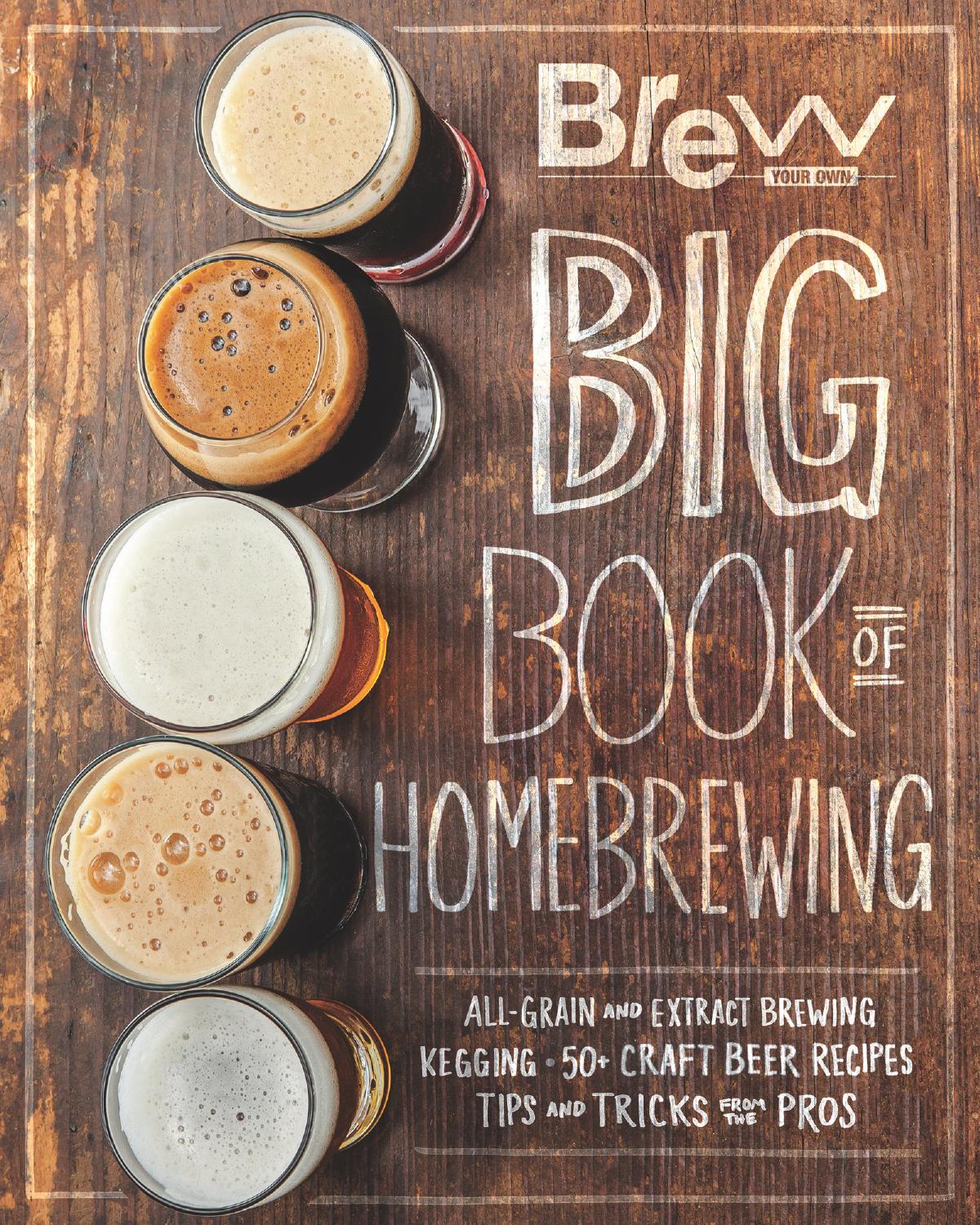The Brew Your Own Big Book of Homebrewing by Brew Your Own

Author:Brew Your Own
Language: eng
Format: epub, pdf
Publisher: MBI
Published: 2017-07-29T16:00:00+00:00
BUILDING A STARTER
Here is how to build a yeast starter for a standard 5-gallon (19 L) batch of brew. Since it is difficult to know how many viable yeast cells survived the trip from the lab into your hands, begin by making a starter of 1 pint (about 500 mL), which you will then build up to 1 quart (about 1 L).
A yeast starter is essential for high-gravity beers. Even beers in the standard gravity range can benefit from a starter though (see below for more).
If you are using yeast in a smack pack, remove the pack from the refrigerator and allow it to reach room temperature. Then, squeeze or smack it to rupture the capsule of yeast inside and release it into the nutrients. Leave it at room temperature to incubate and swell. Allowing the pack to swell provides proof that the yeast in the pack is alive before you go any further. If you are using a vial of yeast, simply let it reach room temperature and then gently shake the vial to get the yeast into suspension so none of it is stuck to the bottom of the vial. Next, get a small batch of wort ready.
If you made a big batch of starter wort in the past and refrigerated some, grab a jar and allow it to come to room temperature. If not, make the appropriate volume of starter wort at a specific gravity of 1.020 to 1.040. (For every 1 quart/1 L of wort, use approximately 2.5 ounces/70 g of dried malt extract.) Bring it to a gentle boil for 15 minutes, cover, and let cool to 75°F (24°C). To speed the cooling process, surround the bottom and sides of the pot with cold water. Don’t allow any contamination of your mini-batch of wort as you only want pure yeast culture to grow in it, and nothing else. After the wort has cooled sufficiently, open the pouch or vial of yeast and dump it into a sanitized glass bottle or flask that accommodates at least 1 quart (1 L). (Most brewers use a 1,000 or 2,000 mL Erlenmeyer flask.)
Sanitize your hands and the outside surface of the smack pack or vial before opening the pack or vial and pouring it into your container of wort. Seal the opening of the flask with a sanitized airlock and your yeast starter is ready to grow.
At this stage, the only thing that may be lacking in our little batch of beer is oxygen. An ample supply of oxygen is needed for the yeast to prepare for a life of fermentation. There should be some oxygen in the wort to help the yeast get started if you accompanied the transfer with splashing. You could also increase the amount of oxygen in the wort by occasionally swirling the container vigorously. Swirling also benefits the starter by keeping the yeast in suspension and in greater contact with the wort. If you have an aquarium pump or oxygen tank you use for aeration, you can also use that to more thoroughly aerate your starter.
Download
The Brew Your Own Big Book of Homebrewing by Brew Your Own.pdf
This site does not store any files on its server. We only index and link to content provided by other sites. Please contact the content providers to delete copyright contents if any and email us, we'll remove relevant links or contents immediately.
101 Whiskies to Try Before You Die by Ian Buxton(44805)
World's Best Whiskies by Dominic Roskrow(44742)
Whiskies Galore by Ian Buxton(41884)
Craft Beer for the Homebrewer by Michael Agnew(18145)
Right Here, Right Now by Georgia Beers(4128)
Not a Diet Book by James Smith(3341)
Water by Ian Miller(3129)
The Coffee Dictionary by Maxwell Colonna-Dashwood(3067)
Kitchen confidential by Anthony Bourdain(3014)
Coffee for One by KJ Fallon(2570)
Smuggler's Cove: Exotic Cocktails, Rum, and the Cult of Tiki by Martin Cate & Rebecca Cate(2473)
Superfood Smoothie Bowls: Delicious, Satisfying, Protein-Packed Blends that Boost Energy and Burn Fat by Chace Daniella(2390)
Talking as Fast as I Can by Lauren Graham(2386)
Beer is proof God loves us by Charles W. Bamforth(2375)
Bourbon: A Savor the South Cookbook by Kathleen Purvis(2246)
A Short History of Drunkenness by Forsyth Mark(2235)
Eat With Intention by Cassandra Bodzak(2157)
Cocktails for the Holidays by Editors of Imbibe magazine(2082)
Colombia Travel Guide by Lonely Planet(2066)
